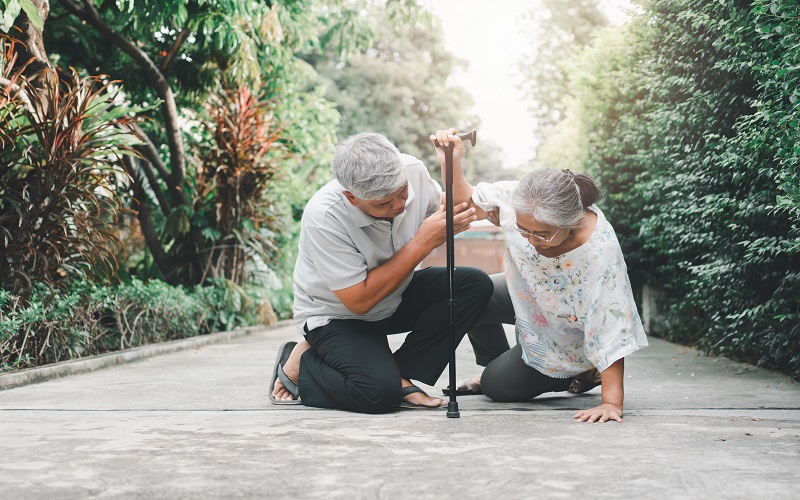
Adapted from the “Preventing Falls” DocTalk by Dr. Rabiah Ali
0:16 | Why are we concerned about preventing falls?
We’re concerned about preventing falls for a number of reasons, but the most important is the loss of mobility. If someone takes a bad fall and ends up with a hip fracture that requires a hip replacement, it is going to take time to recover from that injury. They may end up in a nursing facility while they try to recover, and there is still the chance that they will not regain their full movement, so that is what we mean by a loss of mobility.
The loss of mobility can lead to a loss of function or one’s ability to do things for themselves. After a major fall, many individuals who had been living alone will go to an assisted living or nursing care facility because they are no longer able to care for themselves.
1:14 | What conditions make some patients more likely to fall?
There are a lot of different factors that could put someone at risk to fall. During the Medicare annual wellness visit, for those 65 or older, patients are screened for falls through three questions that help find out whether someone is at a higher risk for falls. Those questions are:
- Have you had a fall in the past year?
- Are you afraid of falling?
- Are you having any difficulty with your balance or with walking?
If a patient answers “yes” to any of those three questions, it shows that they are at a higher risk for having a fall. An example of this could include someone with long-standing diabetes. These patients often experience neuropathy in their feet, which leads to a feeling of numbness or weakness. This makes it harder to feel the floor beneath them, which can make them more likely to fall. Another example might include patients who have poor eyesight due to macular degeneration (a disease of the eye that can cause a loss of vision) or glaucoma (which affects the nerve that connects the eyes to the brain). This vision loss puts them at a greater risk for falls because they cannot see where they are going.
2:23 | How would your provider assess your fall risk?
There are a few ways in which a primary care provider can assess you. First and foremost, if you’re concerned about falls, talk to your primary care provider. In the clinic office, there are a number of things your provider can do to support you:
- The Up & Go test: This timed test assesses your balance and your risk of falling.
- The Chair Stand test: Based on your age and how many chair-stands you’re able to do, this will help your provider assess your risk for falling.
- Medication review: A review of your current medications to assess whether anything you’re taking may be adding to your risk for falls.
- Referral to physical therapy: Be guided through a customized physical activity program that helps you maintain the health of your physical movement.
- Home health evaluation: Someone comes to your home and helps you identify hazards or areas of concern that may lead to a fall.
- At-home exercises: Learn simple movements you can do at home, on your own time, that will help to reduce your fall risk.
3:18 | What can you do to prevent falls for yourself and your loved ones?
To help you or your family members reduce the risk for falls, you can do a number of things, including:
- Do your own home-evaluation. This includes making sure that all main walking areas of the home are clear and free of obstacles; install grab bars to hang onto in the shower; keep things within easy reach that don’t require reaching too far up or down; keep a stool or grabbing-device nearby for items that are hard to reach.
- Use a fall alert system. For families who are really concerned, especially if you live alone, I always recommend the use of a fall alert system. Those can come in the form of a necklace, a watch, or even a phone app.
4:20 | What should you do if you have a fall?
- The first thing you should do is stay calm and assess yourself for injuries. Try not to move too much or too fast in case you are injured.
- If someone is with you, call out for help so they can assess you further and help you call for medical help, if needed.
- If you’re alone and you have a fall alert system, great! Now is the time to use it.
- If you do not have a fall alert system and you do not notice any major injuries, do your best to get to a phone and call for help.
- If you’re not able to do any of the above, including call for help, the next best thing you can do is make sure you are comfortable. Find a blanket to cover yourself and stay warm or look around to see if there is anything you can grab to lift yourself up with.
- If there are no injuries with your fall, it is still important to follow up with your primary care provider to talk about falls. Once you’ve had a fall, you are at greater risk for another fall.

